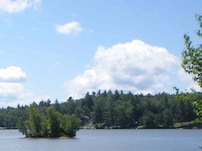
Weisberger’s first book, Reporters for the Union (1953), expanded upon his dissertation; his second, They Gathered at the River (1958) offered a history of evangelical revivals from the 18th through the mid-20th century. His groundbreaking 1959 essay, “The Dark and Bloody Ground of Reconstruction Historiography” earned the Charles Ramsdell Prize for best article published that year in the Journal of Southern History. His increasing interest in broader audiences beyond academia led him to a long association with American Heritage magazine, and to retirement from teaching in the early 1970s.
Weisberger’s other books include The American Heritage History of the American People (1971); The Dream Maker: William C. Durant, Founder of General Motors (1979); Cold War, Cold Peace (1984); The Statue of Liberty (1985); The LaFollettes of Wisconsin: Love and Politics in Progressive America (1994); America Afire (2000); and When Chicago Ruled Baseball: The Cubs-White Sox World Series of 1906 (2006). A lifelong advocate for popular history writing and historically-informed journalism, Weisberger wrote “In the News” from 1989 to 1999, a regular column in American Heritage examining current events in light of historical antecedents. He collaborated with documentary filmmaker Ken Burns on projects including The Statue of Liberty (1985) and The Congress (1988), and with television journalist Bill Moyers on projects including A Walk Through the 20th Century with Bill Moyers (1984).
Click on the cover for details about the eBook:




